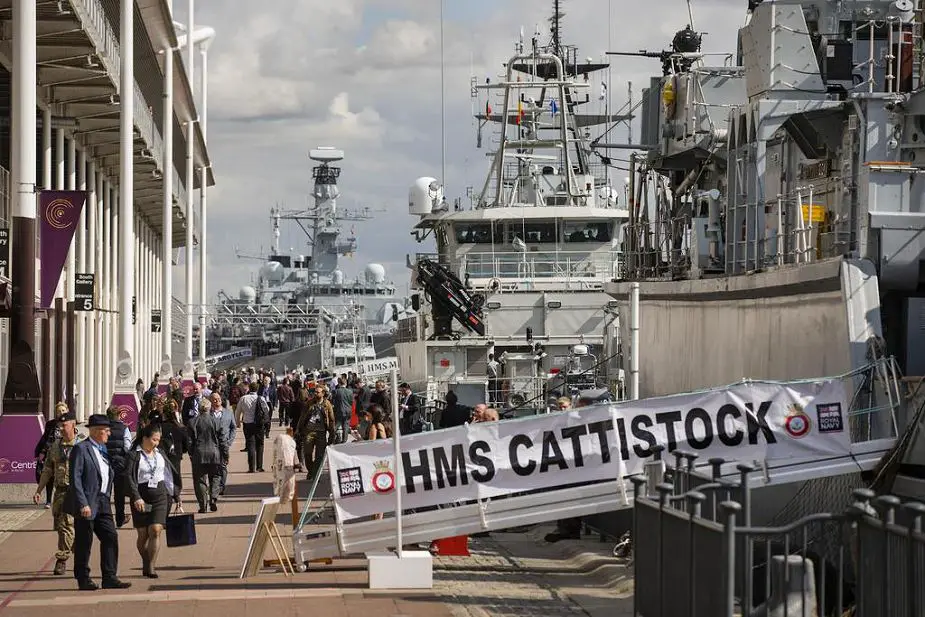Breaking news
DSEI 2019: Naval Zone interactive showcase of latest vessels and maritime defense technology.
DSEI holds an unrivaled naval heritage, ranging from warship displays to showcasing the most cutting-edge maritime electronic technology. In addition to these impressive displays, the Royal Navy will use DSEI 2019 to host its Maritime Capability Conference, focusing on the opportunities and capabilities for modernization and transformation in a fast-changing and increasingly digital world.
 DSEI will once again feature an impressive array of naval static displays. (Picture source DSEI)
DSEI will once again feature an impressive array of naval static displays. (Picture source DSEI)
The conference will examine the Royal Navy’s dedication to innovation and adaptation in training a cutting-edge Navy of the future. Bringing together the brightest minds in the maritime sector, including the heads of navies from around the world, its aim is to explore the opportunities and potential challenges posed by Artificial Intelligence and advances in autonomy.
The Royal Navy has emphasised its commitment to modernisation. This includes harnessing the opportunities presented by technological advances in autonomy, computing and AI, to enable ongoing operational advantage.
The expanding capabilities of autonomy are being embraced, alongside a continued commitment to manning and training the future Navy. Every year since 2016, Exercise Information Warrior has seen the Royal Navy collaborate with industry partners to develop its Information Warfare programme, reinforcing high-tech Information Warfare as a key naval focus.
While deterrence and the ability to engage with adversaries remain at the heart of the Royal Navy, it is also developing in terms of mass, reach and effectiveness through advances in autonomy. Agility and flexibility have also been enhanced with the power of Carrier Strike, ensuring the Royal Navy remains dominant in maritime environments.
“To remain credible and maintain our competitive edge we must continue to embrace new technology, both in the future platforms we are building and by future-proofing the platforms we already have in service” said Admiral Sir Philip Jones, First Sea Lord and Chief of Naval Staff.
“The Royal Navy has a strong pedigree in this regard; Admiral Jackie Fisher’s reforms at the start of the 20th century transitioned the Royal Navy from sail to steam, started building ships with iron and steel instead of wood and became the first to do away with cannon lining the sides of our ships, instead introducing rifled guns in turrets, made accurate by the invention of the first fire control computers. We became pioneers in the worlds of submarine warfare and maritime aviation. And now, as we approach the era of machine speed warfare, we’re leading the way again, accelerating the introduction of novel and disruptive technologies such as open architecture command systems and Artificial Intelligence as we work our way towards a fully digitized Royal Navy. We aim to have an unmanned MCM capability in UK waters by 2020, with a view to taking the man out of the minefield all together, these technological advances offer a glimpse of the exciting future that awaits us. But the important thing is how we empower our people to come up with new ideas and to take risks, potentially failing during development, so we never fail on ops. I see DSEI as a hugely beneficial opportunity for us all to meet with partners from industry, academia, and with our counterparts from overseas and to share and learn from each other in this endeavour.”


























